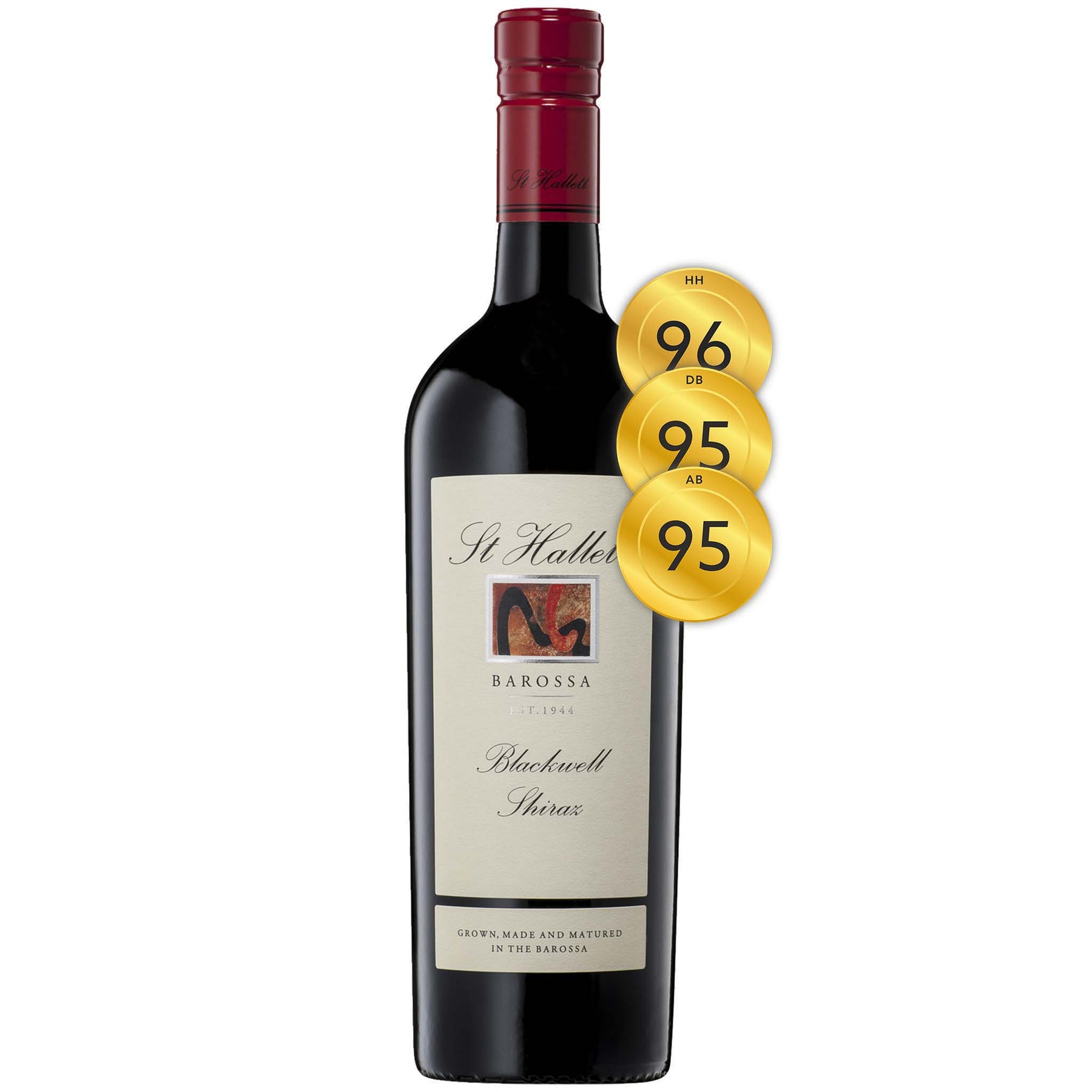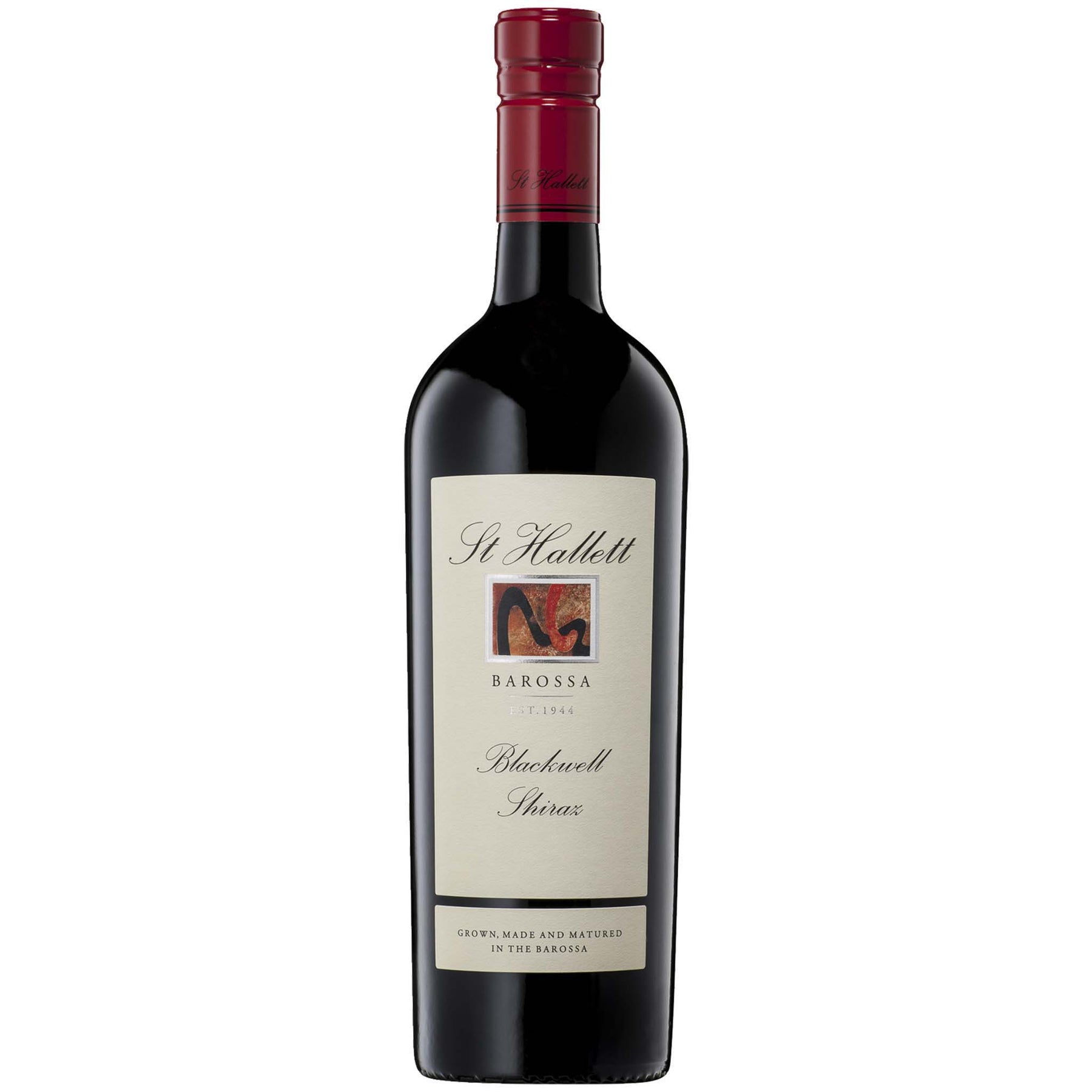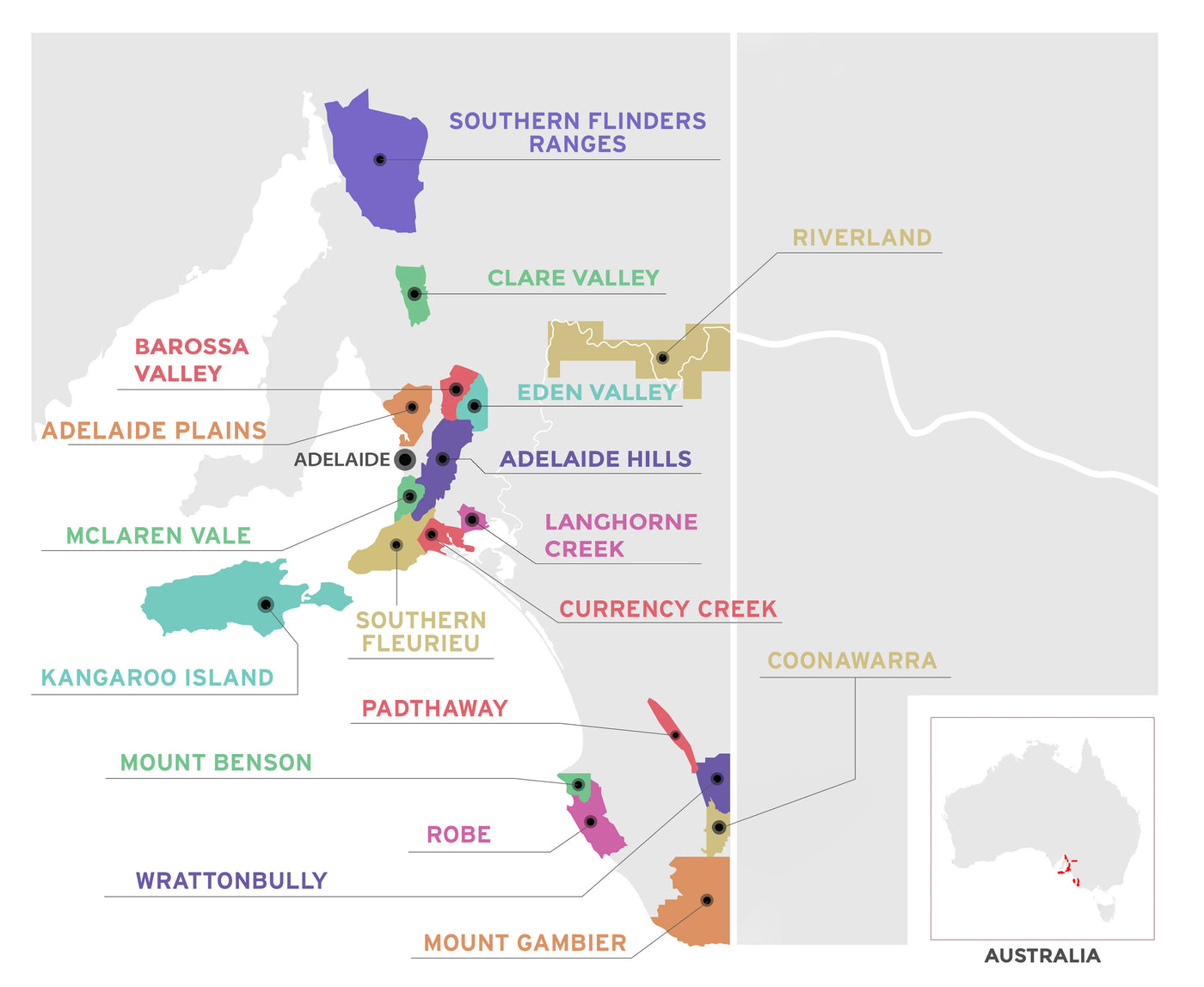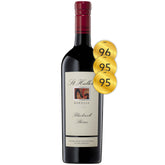

St Hallett Blackwell Shiraz 2021
Style: Red Wine
Variety: Shiraz
Closure: Screwcap
St Hallett Blackwell Shiraz 2021
Camberwell
Burke Road
Camberwell VIC 3124
Australia
Critic Score: 96
Alcohol: 14.5%
Size: 750 ml
Drink by: 2034
"The 2021 vintage is in my mind, the best one I’ve ever been involved in – everything is just amazing." Helen McCarthy, St Hallett Senior Winemaker
Blackwell Shiraz was first released in 1994, in honour of Stuart Blackwell, winemaker for more than three decades and a tireless contributor to the St Hallett story. The fruit is sourced predominately from Northern Barossa (vineyards in Greenock, Ebenezer and Moppa Hills) with the red brown clay soils creating wines with hallmark characteristics of black plum, cherries and dark chocolate.
"It's a classic Barossan style and one that St Hallett does very well, consistently dealing out great examples of what made the region famous across the world. Plush and endearing with superfine powdery tannins and a black-fruited finish that lingers nicely, showing abundant spice and meaty, earthy nuance. You can see why these wines are so well supported, especially so from a vintage as strong as 2021." Dave Brookes
"Intense flavours of blackberry and mulberry are complemented by waves of milk chocolate and sweet baking spice flow across the palate. The supple tannins are well polished, persistent and complemented by the well-balanced oak. This full-bodied, rich and opulent wine is perfectly structured to ensure the wine will age gracefully throughout the years."
Blackwell Shiraz is consistently sourced from vineyards in the parishes of Ebenezer, Greenock and Moppa Hills. Individual parcels are harvested and treated as single batches in the winery. The fruit was destemmed and transferred to various sized fermenters based on the batch size. Yeast selection, pump over regime and ferment temperature varied, based on the characters of the block with fermentation typically around 24 - 26°C and time on skins between 10 and 12 days. Malolactic fermentation took place in the fermenter. After pressing, the parcels were filled to American oak barrels, where they matured for 12-16 months." St Hallett
Expert reviews
"Very deep, bright, saturated purple colour with aromas of tar/graphite, ironstone and smoky oak, the oak well balanced and the tannins firm and coating and long. A solid, powerful yet elegant shiraz with great cellaring potential which can also be enjoyed now. Drink: 2023–2038." Huon Hooke, The Real Review - 96 points
"Super-deep crimson in the glass with inviting aromas of macerated plum, blackberry, boysenberry and blueberry fruits. Hints of fruit cake spice, licorice, dark chocolate, turned earth, violets, olive tapenade, vanillin oak panforte and roasting meats. It's a classic Barossan style and one that St Hallett does very well, consistently dealing out great examples of what made the region famous across the world. Plush and endearing with superfine powdery tannins and a black-fruited finish that lingers nicely, showing abundant spice and meaty, earthy nuance. You can see why these wines are so well supported, especially so from a vintage as strong as 2021. Drink by 2038." Dave Brookes, Halliday Wine Companion - 95 points
"Dark, inky and youthful in the glass. Heady aromas of plum conserve, coffee grounds, sweet spice, licorice and oak. Full throttle flavour, big, bold and beautifully Barossa. Opulent, with a core of dark fruit, spice and oak along with grippy, textured tannins and livley acidity. There's lashings of flavour here, but also balance and drinkability. Drink: 2023–2038." Aaron Brasher, The Real Review - 95 points
Helen McCarthy

When a young Helen moved with her family from England to Australia in 1988, she had no idea what her future would hold. She had an interest in science, but on her 18th birthday, she was persuaded to enrol in an oenology degree at the University of Adelaide and never looked back. Helen graduated with first class honours in 2000, and has since enjoyed a steady climb to the top of her profession.
On completion of her degree she joined Southcorp Wines and worked at Lindemans, Wynns Coonawarra Estate, Seppelt and Penfolds. In late 2002, she joined Taylors Wines in the Clare Valley. She spent eight years at Taylors, the last six in the coveted role of Senior Winemaker. Less than a decade after she graduated, she was recognised as one of Australia’s brightest winemaking talents, winning two Young Winemaker of the Year awards in 2008. She followed these up with two more in 2013.
In late 2011, the calling of home - Barossa - saw Helen move to Thorn-Clarke Wines as Senior Winemaker. She helped lead a new generation of Barossa winemakers and her 2012 Ron Thorn Shiraz was named 'The Best Shiraz in the World' at the prestigious International Wine and Spirit Competition. Helen particularly loved the region's strong sense of community and commitment to sustainability. Helen's time at Thorn-Clarke ignited a passion for Eden Valley, and in 2015, she took up the position of Chief Winemaker at Mountadam Vineyards. The focus during her time at Mountadam was on lifting the profile of the winery.
In late 2019, a once-in-a-lifetime opportunity arose, and Helen joined St Hallett as Senior Winemaker. This led to her being promoted to the role of Director of Global Winemaking for Vinarchy in 2025, following the merger of Accolade Wines and Pernod Ricard Winemakers. Vinarchy is home to a range of global brands led by Hardys, Campo Viejo and Jacob’s Creek, and domestic brands including St Hallett.
The following interview is taken from https://wineriesofsouthaustralia.com.au/meet-the-winemaker-helen-mccarthy/
When did you realise you wanted to become a winemaker?
It was when I was eighteen and finalising my course choice for university. I had put down pure science degrees until my best friend suggested winemaking. He got one of his wine marketing subject lecturers to call me, and we talked for two hours about the industry, winemaking, and his passion for said industry. He infected me with the wine industry bug and I changed my preferences at the twelfth hour. Luckily, I got in and enrolled on my eighteenth birthday and I haven’t looked back!
Please tell us about your career so far
I have a Bachelor of Agricultural Science (Oenology) with First Class Honours and a Master of Business Administration. When I finished my undergraduate degree I joined Southcorp Wines as a graduate winemaker and spent time at Lindeman’s Wines in Mildura, Wynns in Coonawarra, Seppelt Great Western in the Grampians and Penfolds in the Barossa.
In late 2002, I took a position as winemaker at Taylors Wines in the Clare Valley. The eight-year period that I was at Taylors was a massive growth period, and after two years I was promoted to senior winemaker.
The calling of home – Barossa – was too strong, and I began working for Thorn-Clarke Wines in late 2011 as senior winemaker/manager. The role included managing a vineyard estate of 280-hectares. Working at Thorn-Clarke sparked a passion in me for Eden Valley.
In 2015, I took on the role of chief winemaker at Mountadam Vineyards. The focus during my time at Mountadam was on not only chardonnay but also on lifting the profile of Mountadam’s red wines. I loved being part of a small, tight-knit team of people who were passionate about maintaining such an iconic
and important brand to the Australian wine industry. In late 2019 I was presented with the opportunity of joining St Hallett as senior winemaker and manager.
What do you love most about being a winemaker?
I love the variety in the job – I get to walk around the vineyards, get my hands dirty, and use science and art to produce something. I also get to travel and eat and drink in places that I probably couldn’t [otherwise] afford! What’s not to love?
What is your favourite wine, and what food do you typically pair it with?
My favourite variety is riesling, I love the purity and diversity of style. Typically I’ll drink a glass by itself, but it’s also great with a range of dishes from salad right through to spicy curries.
Is there a specific process you follow when developing a new wine?
My brain is quite creative, but my personality is more structured so the process I follow is to look at what is already on the market (that may be within Australia and also outside Australia). From there, it’s to taste as many different wines as I possibly can, and learn as much about that target style or variety as I can. Then I create a style brief that considers what I’m trying to achieve and what I have at my disposal. This brief includes key descriptors about how the wine should smell, taste and feel. Then it’s about spending lots of time planning how we are going to achieve that brief, doing it, and then blending and finishing the wine off.
Is there any vintage you’re particularly proud of creating? Why?
The 2021 vintage is in my mind, the best one I’ve ever been involved in – everything is just amazing. I’m proud of the wines we’ve created, but we really can’t take the credit. In reality, all the stars aligned!
How does the local climate/soil affect the wine you make?
Local climate and soil has a significant effect on the wines that we make. There is a massive difference between fruit sourced in different areas of the Barossa, or even within the same vineyard. It’s our job to highlight and respect these differences – our aim is not to make everything look the same.
Which of your own varieties do you typically indulge in?
At the moment, I’m enjoying a lot of the 2018 St Hallett Higher Earth Syrah and a new release, which is a new take on what it means to be a Barossa shiraz – 2021 St Hallett Blockhead Shiraz Nouveau.
Where do you see yourself in five years? How do you think your winemaking will evolve during this time?
[In five years] I’m planning to still be making wine at St Hallett – still learning about Barossa shiraz and finessing our approach to making outstanding wines that have a sense of place, and that respect the vineyard they were sourced from.
About the winery

Established in 1944 by the Lindner Family, St Hallett represents the very spirit and soul of winemaking in the Barossa. For most of that time it was owned, or part-owned, by one family, the pioneering Lindners, who arrived in the Barossa from Silesia in 1838. In 2017, St Hallett was acquired by Accolade.
St Hallett sources all grapes from within the Barossa and is synonymous with the region's icon variety, shiraz. From the beginning, St Hallett understood the importance of saving old vines and focusing on varieties that thrive in the Barossa region. Strong long-term relationships with focused and passionate growers give St Hallett access to the Barossa's most prized vineyards, some of which were planted over 100 years ago. Over the years, St Hallett has built up a deep understanding of the rich tapestry of vineyard sites and climates in the Barossa and sources the finest vines and highest-quality parcels of fruit the Barossa can offer.
Old Block Shiraz (using grapes from Lyndoch and Eden Valley) is their flagship wine, supported by Blackwell Shiraz (using grapes from Greenock, Ebenezer and Moppa Hills).


South Australia
South Australian is responsible for more than half the production of all Australian wine. It is home to more than 900 wineries across 18 wine regions. The regions are Adelaide Hills, Adelaide Plains, Barossa Valley, Clare Valley, Coonawarra, Currency Creek, Eden Valley, Kangaroo Island, Langhorne Creek, McLaren Vale, Mount Benson, Mount Gambier, Padthaway, Riverland, Robe, Southern Fleurieu, Southern Flinders Ranges and Wrattonbully.
Many of the well-known names in the South Australian wine industry established their first vineyards in the late 1830s and early 1840s. The first vines in McLaren Vale were planted at Reynella in 1839 and Penfold's established Magill Estate on the outskirts of Adelaide in 1844.
South Australia has a vast diversity in geography and climate which allows the State to be able to produce a range of grape varieties - from cool climate Riesling in the Clare and Eden Vallies to the big, full bodied Shiraz wines of the Barossa Valley and McLaren Vale. Two of Australia's best-known wines, Penfolds Grange and Henschke Hill of Grace, are produced here. There is much to discover in South Australia for the wine lover.

